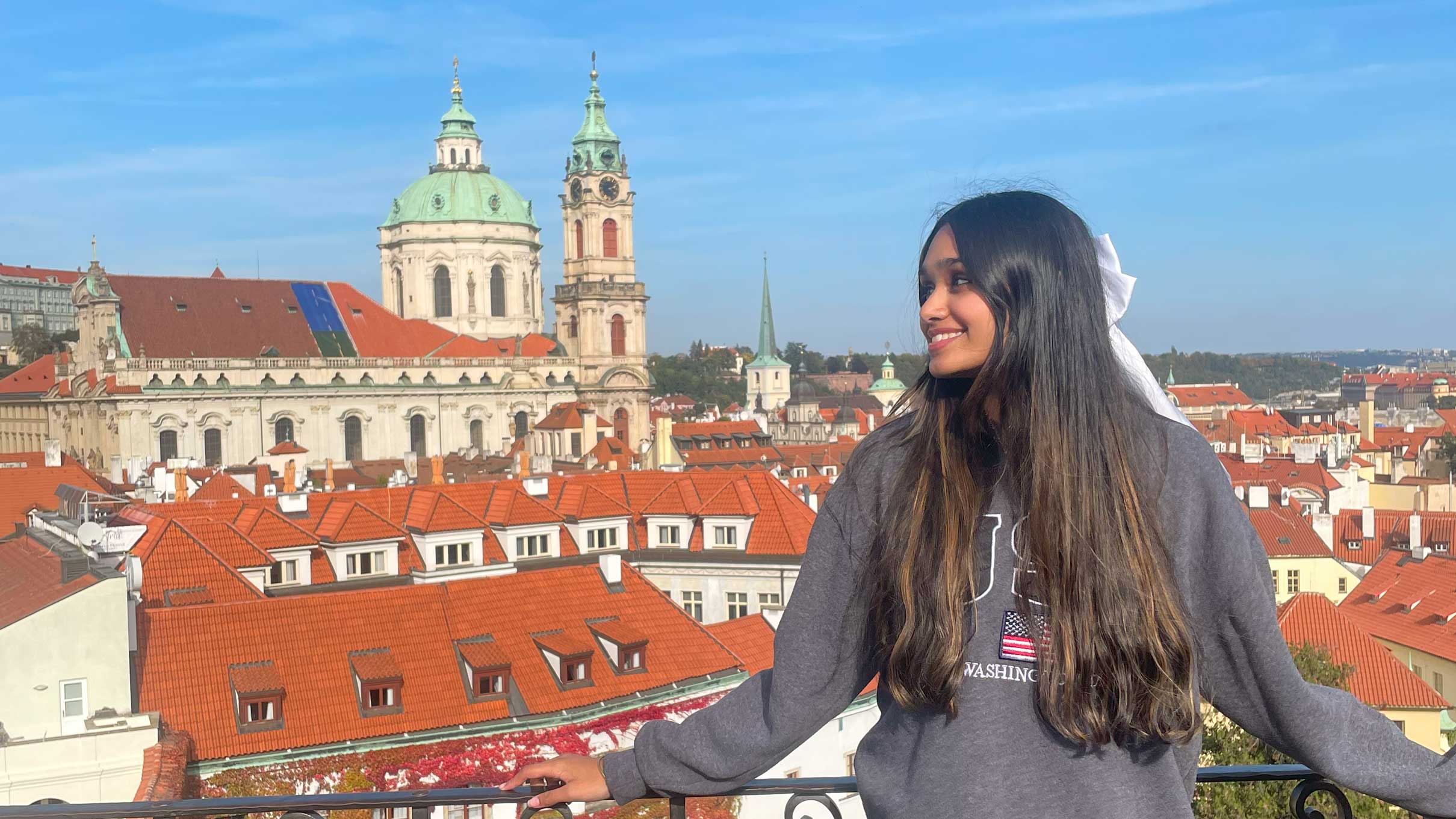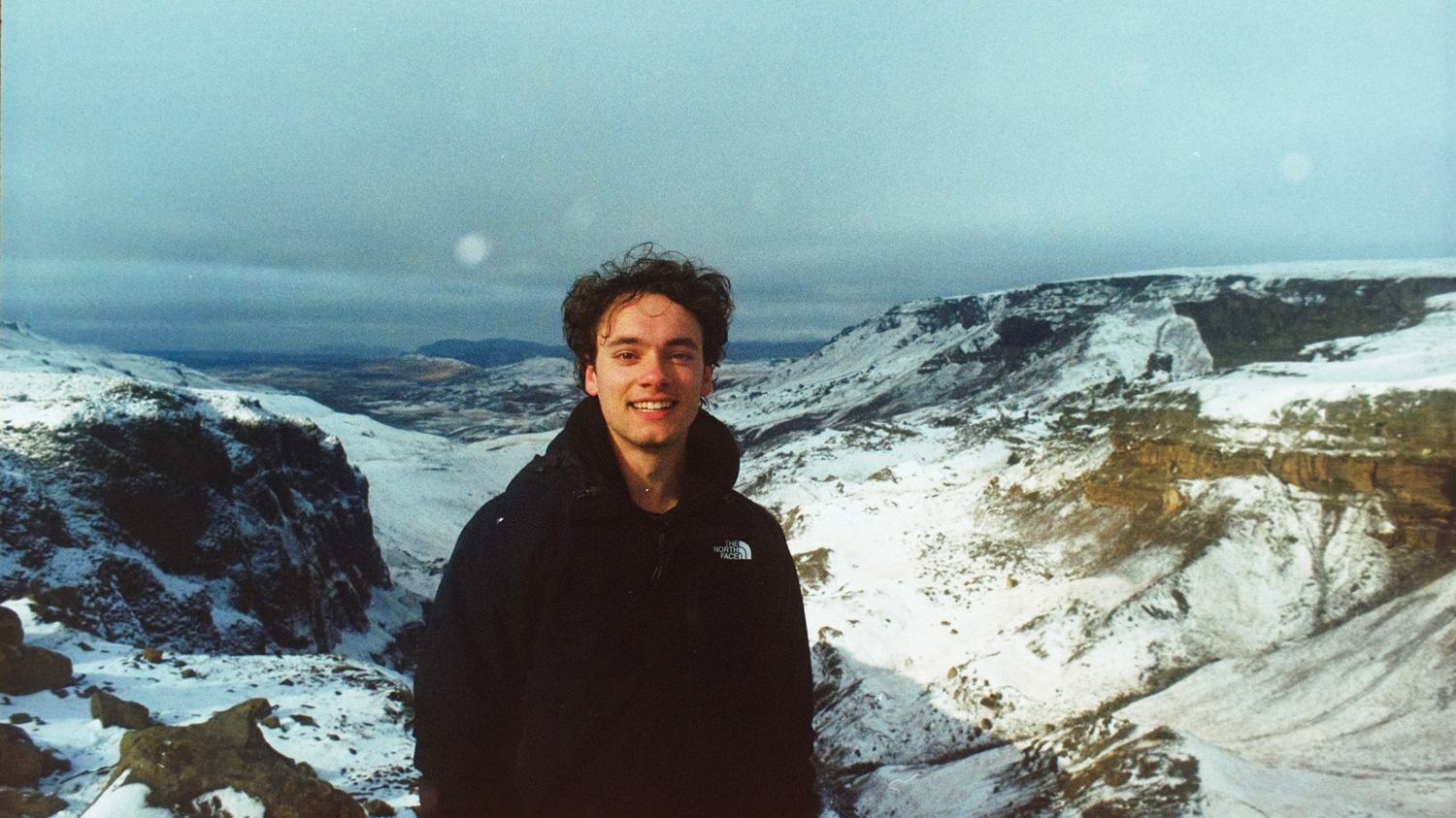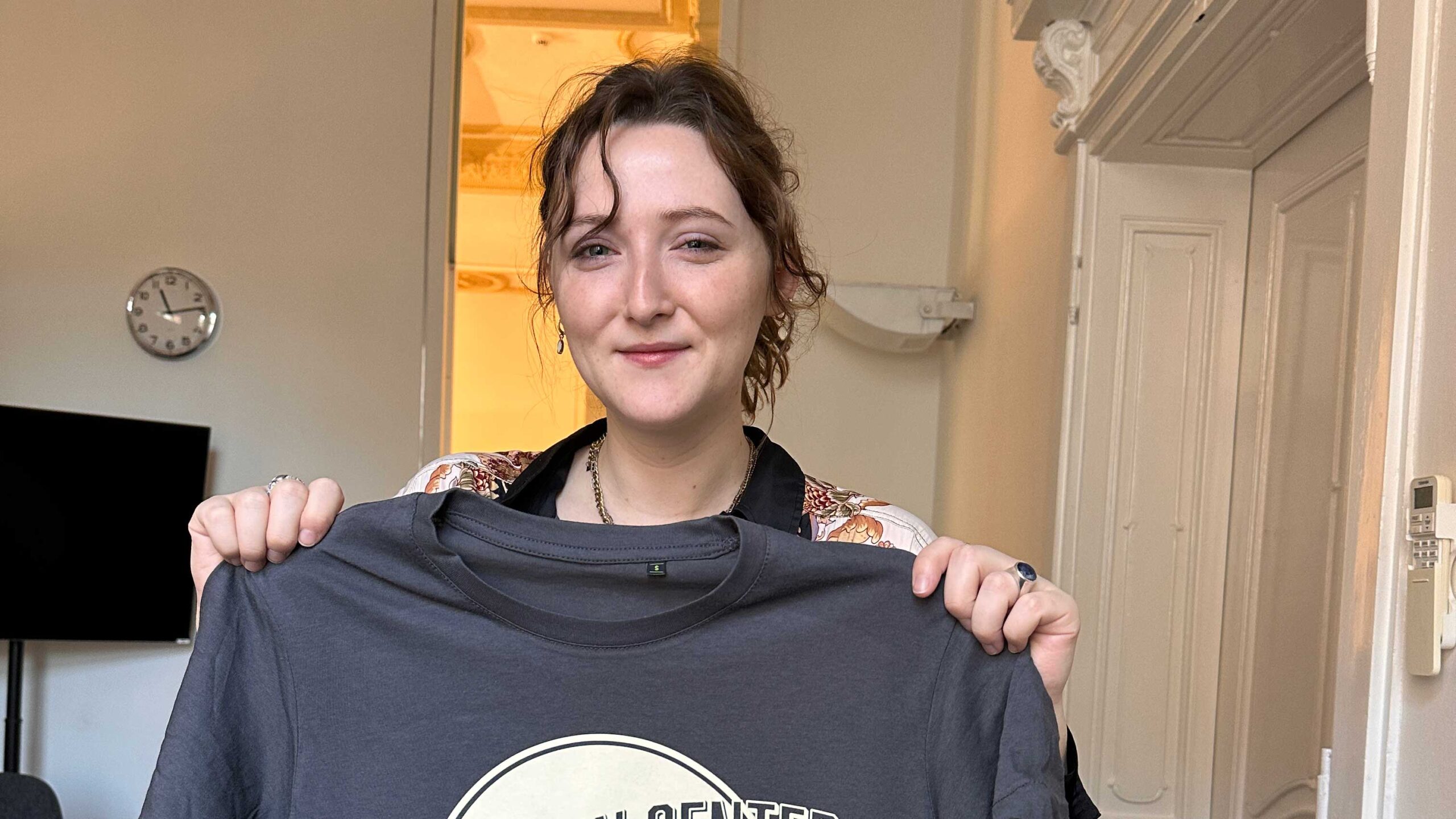It’s a Wolfpack World
As the largest university in North Carolina with a land-grant mission to open the doors of education for our home state, we believe in sharing our research and scholarship to serve a greater good. But our reach doesn’t end at North Carolina’s borders; our students, faculty and staff spark innovation and activity all over the world.
From undergraduates studying abroad to seasoned scholars shaping cutting-edge research in the world’s most remote places, our Wolfpack is extending our unique brand of excellence to every continent on Earth.
Globetrot With the Wolfpack
Africa: Real Rhinoscopies
After two years of preparing to conduct anatomical research on rhinoceros sinuses at the University of Pretoria on the African continent, College of Veterinary Medicine researchers Mat Gerard and Anthony Blikslager only forgot one thing: scrubs.
Since that first trip in 2016, Blikslager, associate dean and director of Veterinary Medical Services, and Gerard, a veterinary anatomy expert and professor, have made three additional trips to South Africa, with the goal to better understand rhino sinuses and possible treatments after horn poaching or other trauma. South Africa is an ideal place to conduct this research as it is home to roughly 15,000 critically endangered and near-threatened rhinos, and a key battleground between poachers and environmentalists.
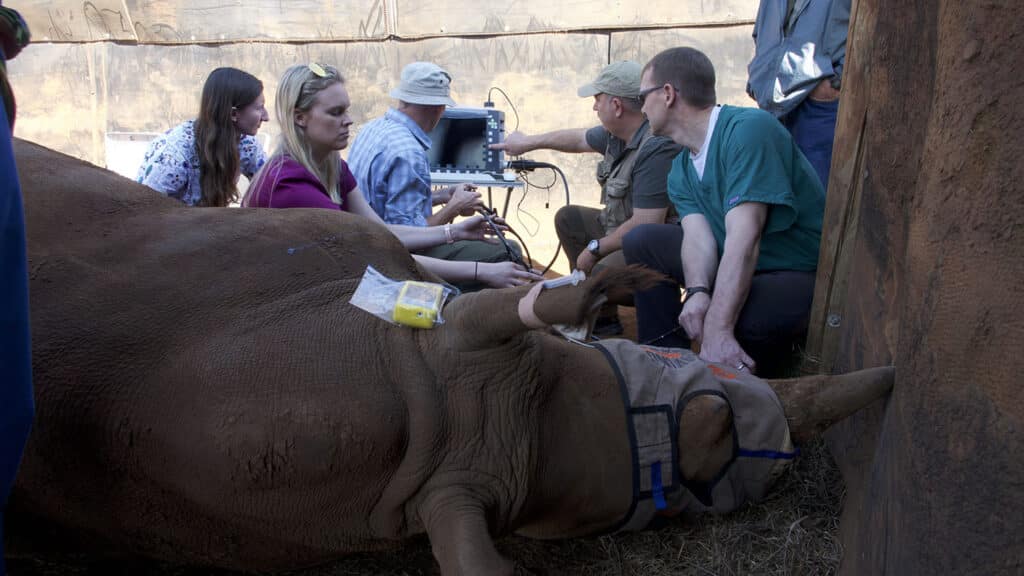
The two researchers’ international collaboration with longtime colleague Johan Marais, CEO of the Saving the Survivors conservation group, has produced a comprehensive mapping of a commonly affected region of the paranasal sinuses in rhinos. This mapping includes two anatomical features — the nasoconchal sinus and conchonasal opening — that Gerard and Blikslager named.
“One of the really remarkable things for us was looking at the anatomy, going to the anatomy textbooks to describe what we were seeing and not seeing it in the book,” said Gerard. “So, literally coming up with the appropriate anatomical term for this sinus space in the front face of the rhino that’s basically below both the rhino horns.”
Their discoveries could yield endless practical treatment options. In North America, the pair often provide zoo and wildlife medicine consultations and, in 2018, successfully helped the Brookfield Zoo in Chicago, Illinois, to carefully remove a mass in a black rhino’s airway. After two surgical interventions, the rhinoceros is still alive today.
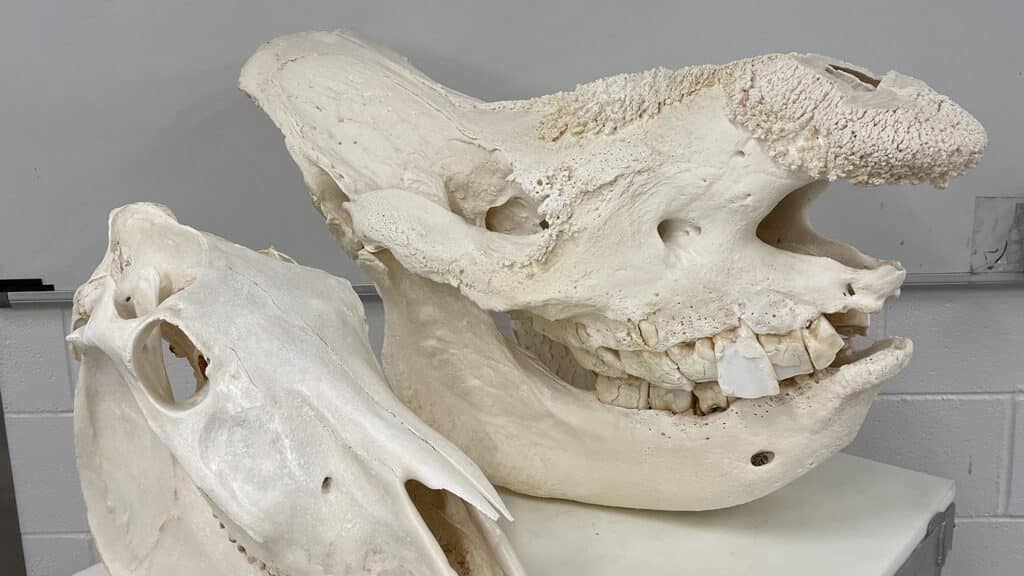
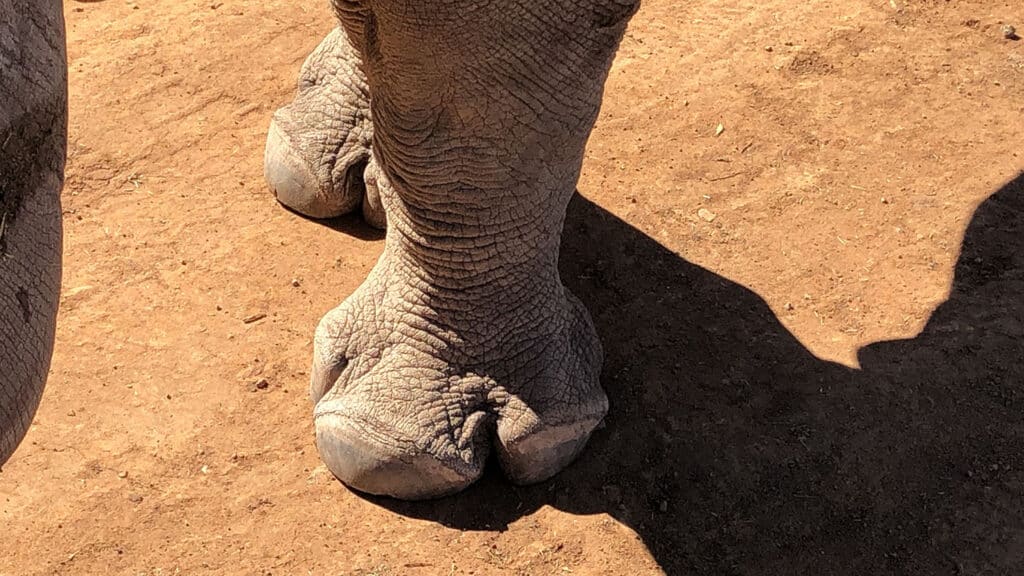
Before studying rhinos, the pair were primarily equine researchers and veterinarians. Shifting their focus to the largest odd-toed ungulates was not a far leap on the evolutionary tree. Both animals sit in the Perissodactyls order and share a few characteristics, like their odd number of toes or hooves.
“We could take our equine knowledge and experience and literally transpose it across to the head of the rhino, and recognize all the similarities to the anatomy and very specific differences that were quite obvious when we were able to dissect the specimens,” said Gerard. “The differences are really quite interesting to us.”
Antarctica: Penguins and People
An expedition coordinated by the Ecuadorian Antarctic Institute in 2019 brought nearly 15 researchers from across the globe to one of the southernmost locations on Earth, inhabited by fewer than 5,000 people. Yu-Fai Leung, a professor and director of graduate programs at NC State’s College of Natural Resources, hoped to establish a better understanding of the competing needs between tourism and conservation for one of the world’s newest last-chance tourist destinations.
In Antarctica, you really need people, and help and support from everyone.
The journey to Greenwich Island in the Antarctic Peninsula was a logistical challenge several countries collaborated to solve. “This is a collaboration at all levels,” said Leung. “In Antarctica, you really need people, and help and support from everyone.”
Mounting a successful research expedition of this magnitude required an overnight stay on a Uruguayan station, lunch at a Chilean station, a charter flight, a helicopter lift and additional coordination once on the continent to reach Barrientos Island.
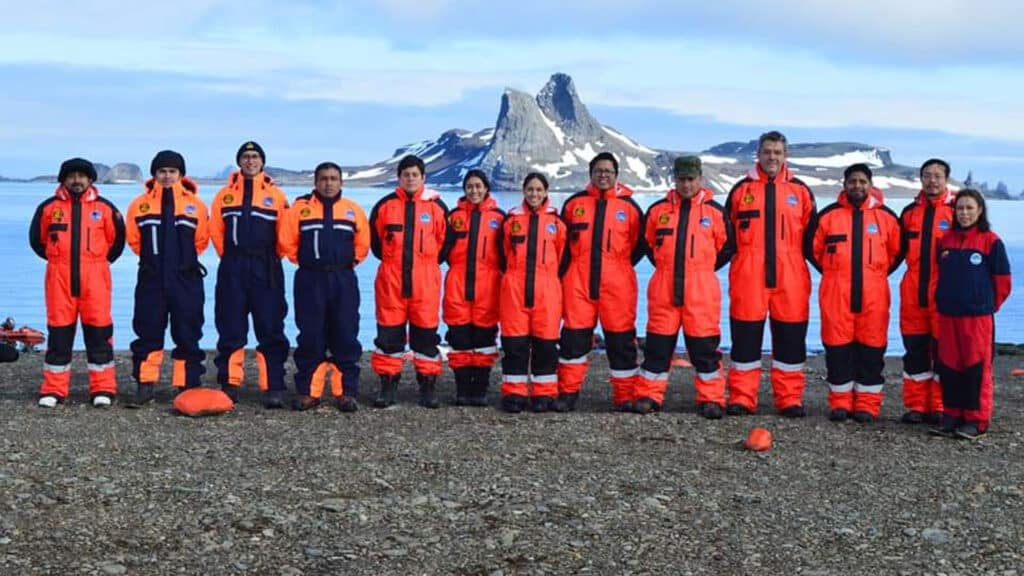
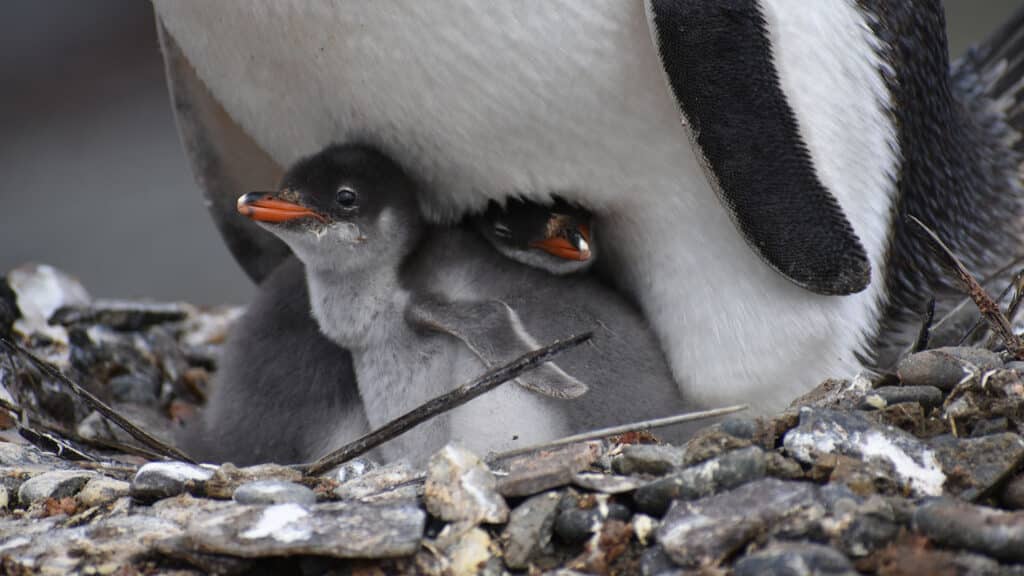
Leung spent most of his time in the region studying people — tourists in particular — and penguins. He and his team evaluated the response of chinstrap and gentoo penguins to differing levels of simulated tourist activity in various proximities. This was a crucial examination of one of the region’s strict tourist guidelines, imposed by the self-regulated group, the International Association of Antarctica Tour Operators: Anyone visiting the continent must maintain a minimum distance of 15 feet from nesting penguins.
The tourist season overlaps with the breeding season, making these guidelines necessary to ensure adult penguins do not become anxious or defensive in their nesting sites. Leung notes that with tourism on the rise on Barrientos Island since 2005, the penguins may already have adapted to visitors.
After speaking extensively with tourists during his research, Leung identified a few causes for the large numbers of visitors — climate change being one of them.
“Some people think if they don’t go, they won’t see the same thing again in the future,” said Leung. “That’s also happening in our own National Parks in the U.S., like Glacier National Park.”
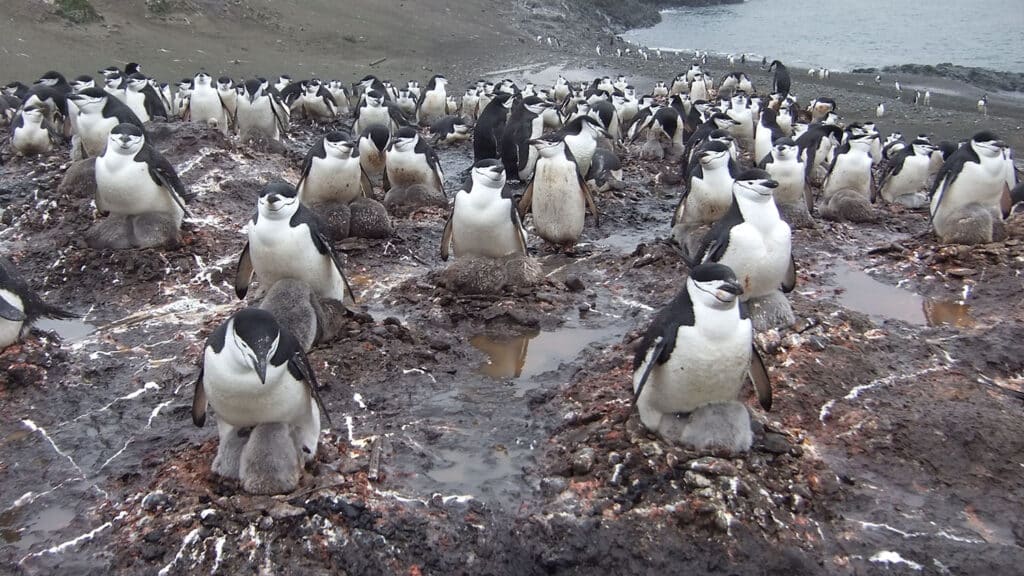
Many tourist destinations — like Iceland, Greenland and Venice — are seeing an influx of visitors for which the regions are unprepared. The desire to see these things before they disappear is normal; however, these changes in travel behavior are another factor impacting the environment in places that could look very different in 10 years. Leung and others studying tourism management are working to better understand how we can balance conservation and tourism.
“There are a lot of research questions about Antarctica that perhaps can be addressed by NC State and its students,” said Leung. “There are ways to get involved through grants or collaborations with other countries. There is not just one way to do it.”
Asia: Empowering Female Environmentalists
Uzma Miraj arrived at NC State in August 2023 — as one of three students from all-female universities in Pakistan — to complete the one-year Climate Change and Society (CCS) master’s program. The students came as part of a wider partnership between NC State’s Department of Marine, Earth and Atmospheric Sciences (MEAS) and four universities in Pakistan.
“I thought I could serve my community by going into the environmental science field,” said Miraj. “I’m from a small village called Passu. It’s in a mountainous region of Pakistan, where there are glaciers and many other natural resources. There are a lot of glacial lake outburst floods, which can destroy entire villages. Landslides are also very common in my region.
“By coming to NC State, I can learn about mitigation policies, which I can apply in my country. I can also use my knowledge in my country to educate people about climate change.”
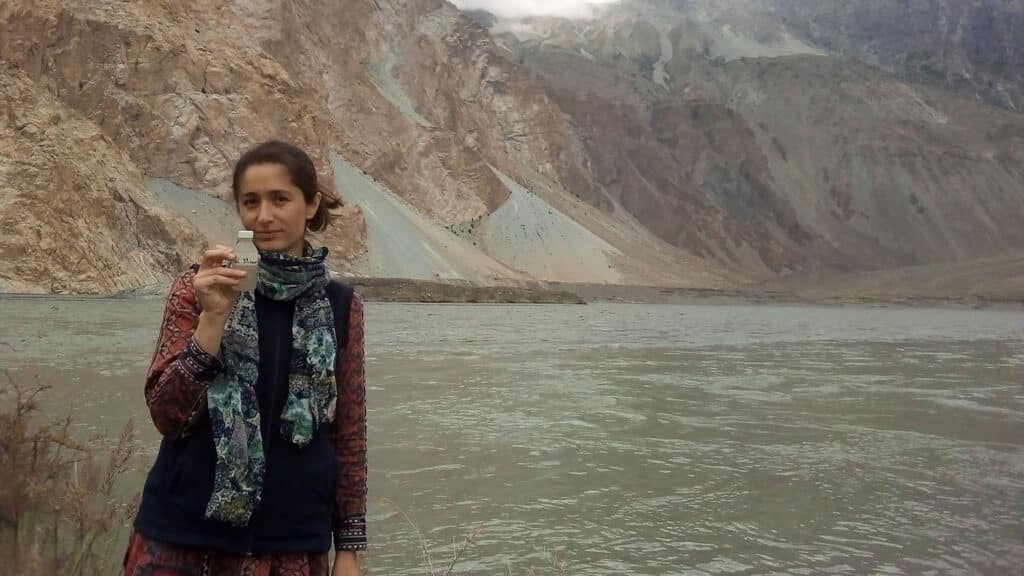
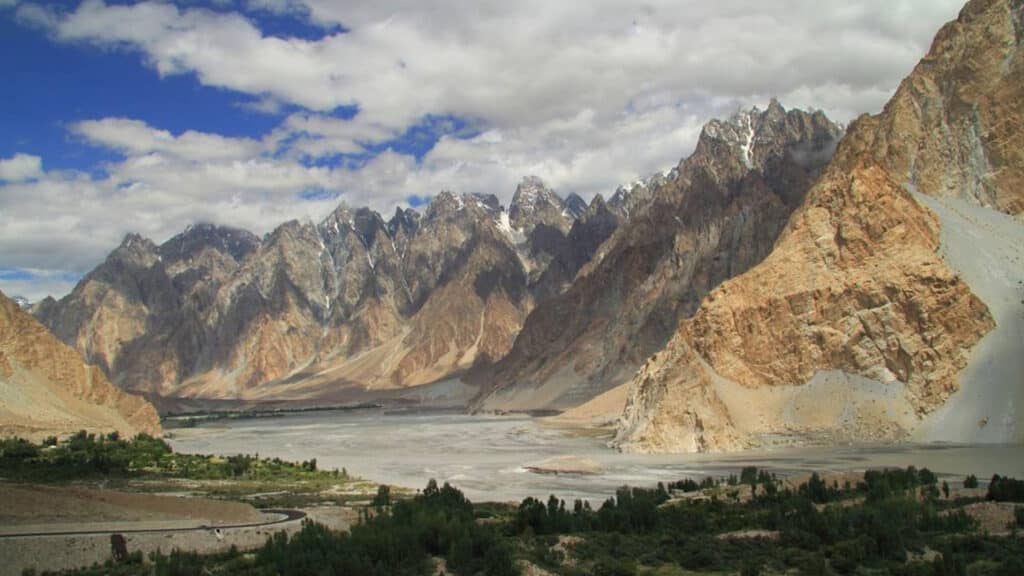
MEAS faculty came up with the idea for a partnership with Pakistani universities centered around climate change training when they learned about a Department of State grant titled, “Developing the Next Generation of Female Environmentalists.” With North Carolina and Pakistan having similar mountains-to-coastline geographies and facing similar climate threats — including rising sea levels and flooding — the collaboration made sense. The partnership also presents a tool to help even out Pakistan’s disparity in women’s participation in environmental policy.
The partnership has helped Miraj and two other students from Pakistan advance in their careers as environmentalists, and it has brought a new perspective to the CCS program.
“Faculty have expressed how nice it’s been to have them in class,” said Jay Levine, an MEAS professor and academic advisor to the students from Pakistan. “They bring a different cultural perspective that they add to discussions. In many cases, they’re experiencing some of the impacts of climate change that we don’t necessarily see here.”
Climate change is going to take collective, global efforts…This partnership reflects the best of that.
The partnership with the four universities in Pakistan consists of many other initiatives, including curriculum development, a consortium and a webinar series. Robert Mera, associate program coordinator and instructor in CCS, collaborates with faculty in Pakistan to host online simulations on international climate negotiations. These simulations give students a tangible taste of how such negotiations work in real life, such as United Nations Conference of the Parties meetings.
“The more we work on these things, and the more there are negotiations between groups, the better the outcome as far as the rising temperature of the planet,” said Mera.
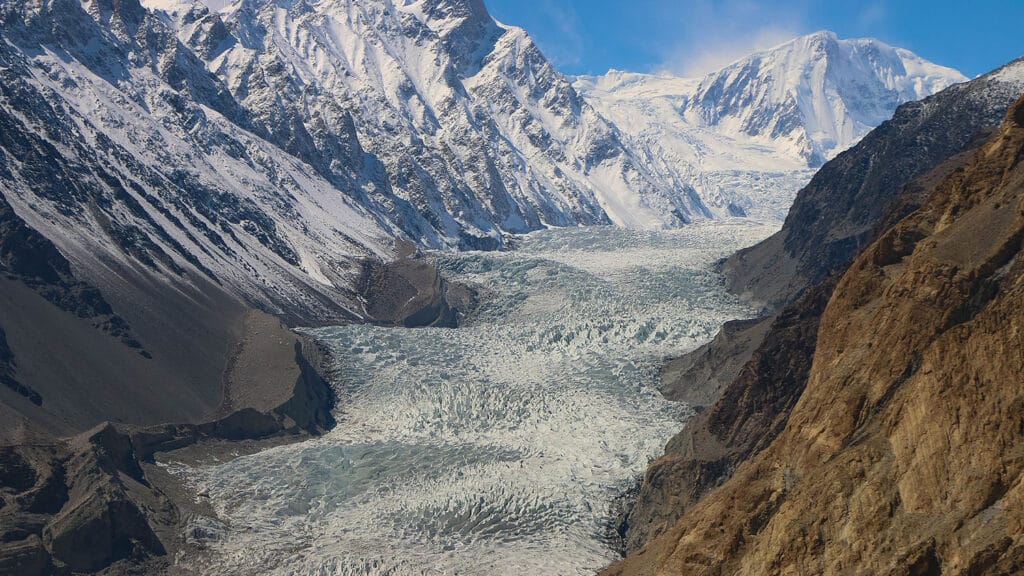
Ultimately, the goal of the partnership is to foster an exchange of knowledge and ideas to more effectively fight climate change.
“Climate change is going to take collective, global efforts,” said Levine. “It has to engage people in different cultures and countries. This partnership reflects the best of that.”
“This project could lay out a great foundation for more collaboration and training in the future, so it’s a great vehicle for us,” added Paul Liu, an MEAS professor and coordinator for the grant.
Australia: Research From Down Under
The Australian Merino is a breed of sheep raised by humans to produce one of the world’s finest wools — a breathable, moisture-regulating fabric that’s often used in clothing for athletes, emergency personnel and others who operate in extreme environments. The benefits of Australian Merino wool have earned it a place in products the world over. The cutting-edge research to better understand these benefits is taking place right here at NC State.
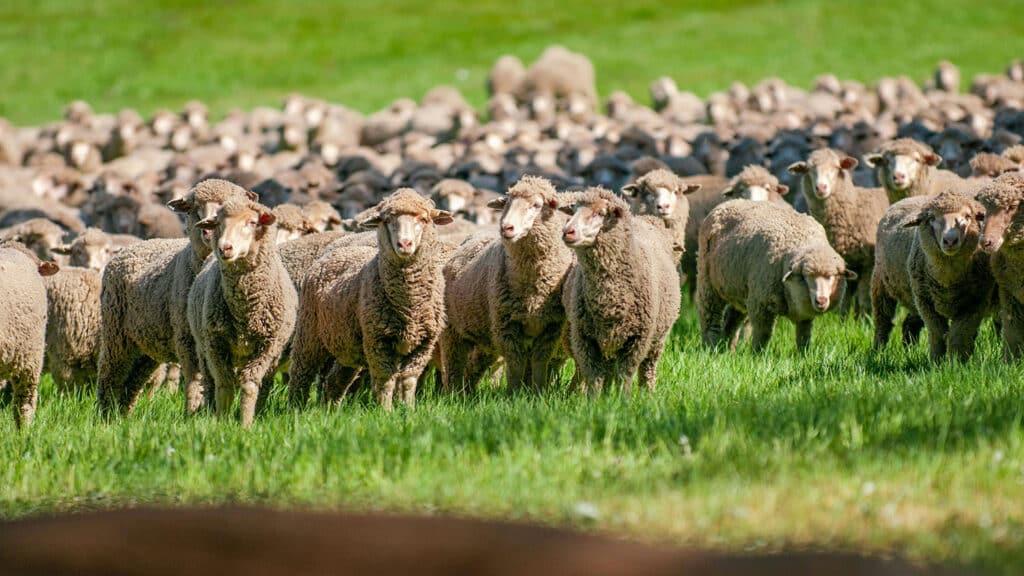
Generating this knowledge not only helps the Australian wool industry, it helps user groups here in our country select and prepare their materials for challenging environments.
Emiel DenHartog, professor and interim department head in Textiles, Engineering, Chemistry and Science, leads these efforts with the Textile Protection and Comfort Center at the Wilson College of Textiles. For several years, DenHartog and his graduate assistants have managed projects sponsored by Australian Wool Innovation Limited — a research and advocacy organization supporting Australia’s woolgrowers — to measure how wool interacts with the human body and compare its performance against fabrics like cotton and polyester.
For their most recent project, DenHartog and his current graduate assistant looked beyond steady-state testing methods to create laboratory conditions that could mirror the dynamic environments human beings move through in their everyday lives.
Working in a climate-controlled chamber, they attached sensors to a sweating thermal manikin — a human model that releases heated water to simulate the transfer of heat and moisture from a perspiring body — to compare how different fabric types retain moisture and heat when worn on a human form. They then drew similar measurements from human volunteers who exercised under changing thermal conditions controlled by the researchers.
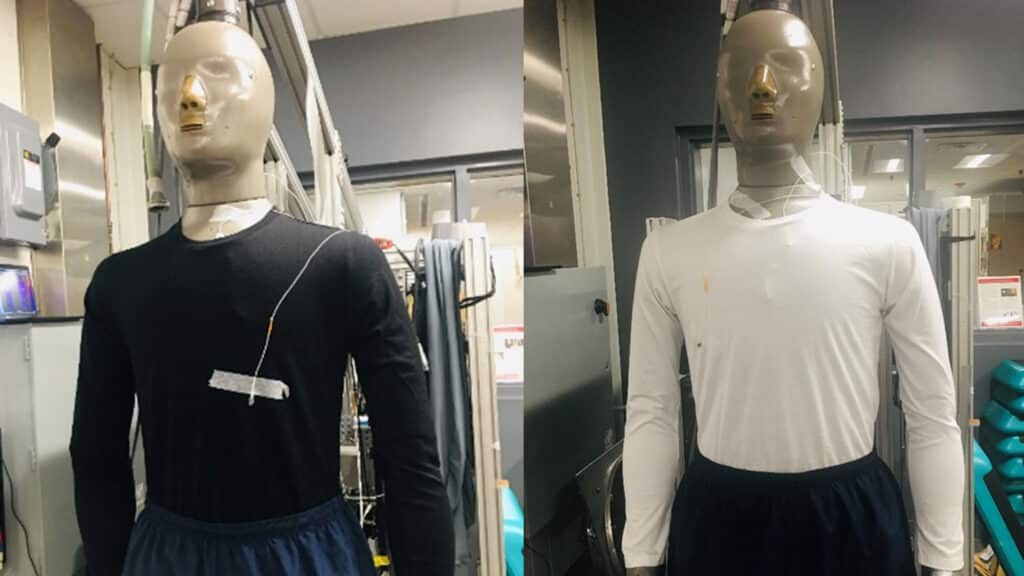
Their findings suggested that, compared to cotton or polyester, wool acts as a stronger buffer against unwanted heat loss after exercise. Wool, DenHartog said, mitigates the so-called “after-chill” effect that can hinder athletes after a workout, when a drastic drop in body temperature can make them uncomfortably cold and raise their risk of injury.
“This research helps us understand how textiles behave in different environments and it helps our students learn by experimenting with these processes,” said DenHartog. “But it also strengthens NC State’s partnerships with industry and with other stakeholders. And generating this knowledge not only helps the Australian wool industry, it helps user groups here in our country select and prepare their materials for challenging environments.”
Europe: Fashion in Florence
Each semester, hundreds of NC State students set their sights on Study Abroad. Committing to a semester overseas has never been easier, with countless degree programs and colleges offering unique global experiences through partner universities.
Bella Reeves, a third-year fashion and textile design (FTD) student in the Wilson College of Textiles, is only halfway through her semester in Florence, Italy, and is already recommending the experience to any student considering it.
“Just do it,” said Reeves. “Even if you don’t know anyone, it’s definitely worth it.”
Reeves began considering a semester abroad at the start of her degree program when seasoned students continued to boast about the experience at the Lorenzo de’ Medici Institute. Attending the Institute — and exploring various European cities — for more than 13 weeks has given Reeves a new perspective on fashion.
In her sustainable and experimental fashion design class, the use of fabrics is banned. The limitation has pushed Reeves to masterfully find alternative fashion materials, like recycled plastic or aluminum, for her projects. Other courses she’s taking range from interior design to the anthropology of fashion.
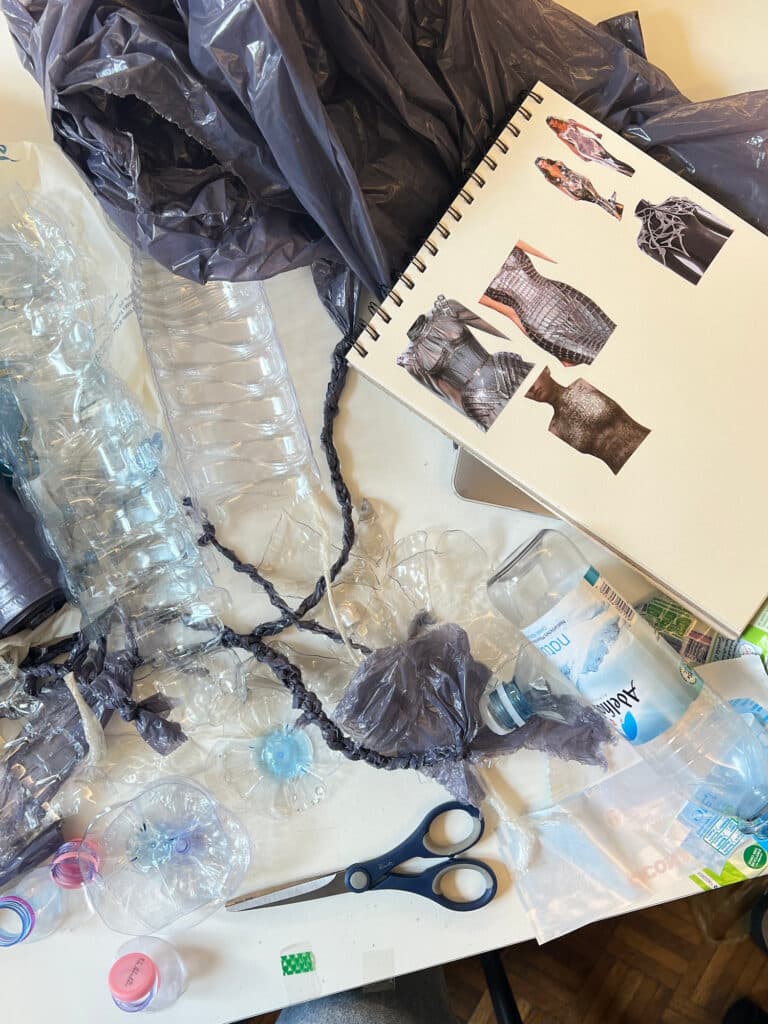
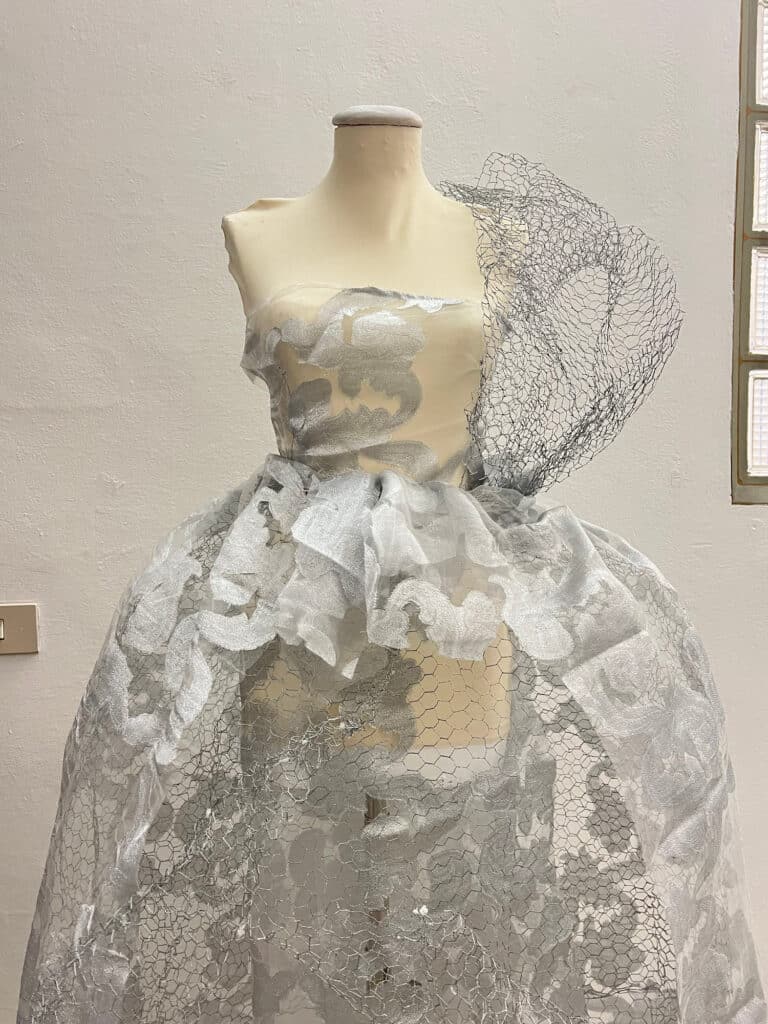
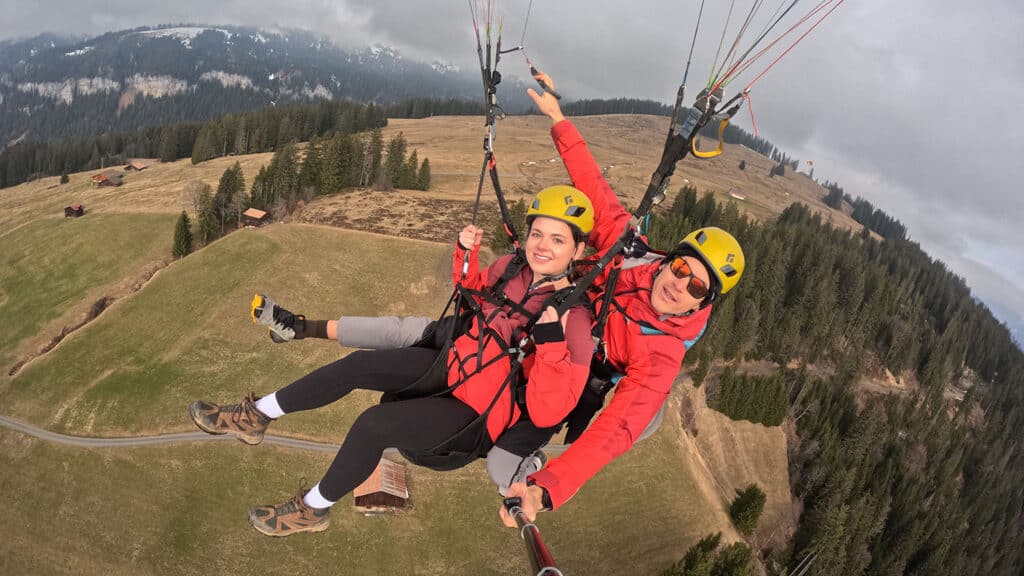
Reeves is basking in fashion, experimenting in Italy and flexing her creativity to ensure that when she’s back at NC State for her senior year, her capstone fashion collection can showcase her growth as a student and designer. After years of conducting research, countless studio hours and learning about branding and marketing, every FTD student must complete the capstone course prior to graduation.
“That’s going to be a big project,” said Reeves. “I’m very excited to see what I’m capable of and what kind of collection I end up coming up with.”
Just do it. Even if you don’t know anyone, it’s definitely worth it.
From the foundational first-year experience through the capstone course, the program’s curriculum is designed to transition graduates into the industry seamlessly. Reeves’ focus on fashion throughout her program has shown her exactly where she’d like to take her career after graduating — deep in the fashion industry, but on the public relations side. Her ability to deliver a final product from start to finish coupled with her marketing knowledge are just the skills she needs to navigate even the toughest situations.
“I’m trying to take what I learned here and really soak up all the last moments,” said Reeves. “It’s really scary, but I will be graduating and going into the real world. I’m just going to try and enjoy it all.”
North America: Extension in Action
NC State Extension is a driver for prosperity across North Carolina — turning science into solutions for people in every county and for the Eastern Band of Cherokee Indians. The establishment of Extension in 1914 fueled NC State’s land-grant mission far beyond the typical call of a university and developed successful statewide partnerships with N.C. A&T State University, local, state and federal government offices.
A core focus area of the initiative is 4-H youth development — a program designed to empower young people with the life skills needed to be successful citizens and eventually lead our state. Three 4-H camps located in various parts of the state have become a summer staple for thousands of children. Young campers often come back years later as counselors, ready to guide the next generation.
“It speaks volumes that we often have campers, 4-H kids or kids who visited on field trips then showing up to work at camp,” says Stacy Burns, director of the Betsy-Jeff Penn 4-H Camp. “It is a beautiful thing to see and to know that they have found something truly formative for their experience and that they want to give to somebody else.”
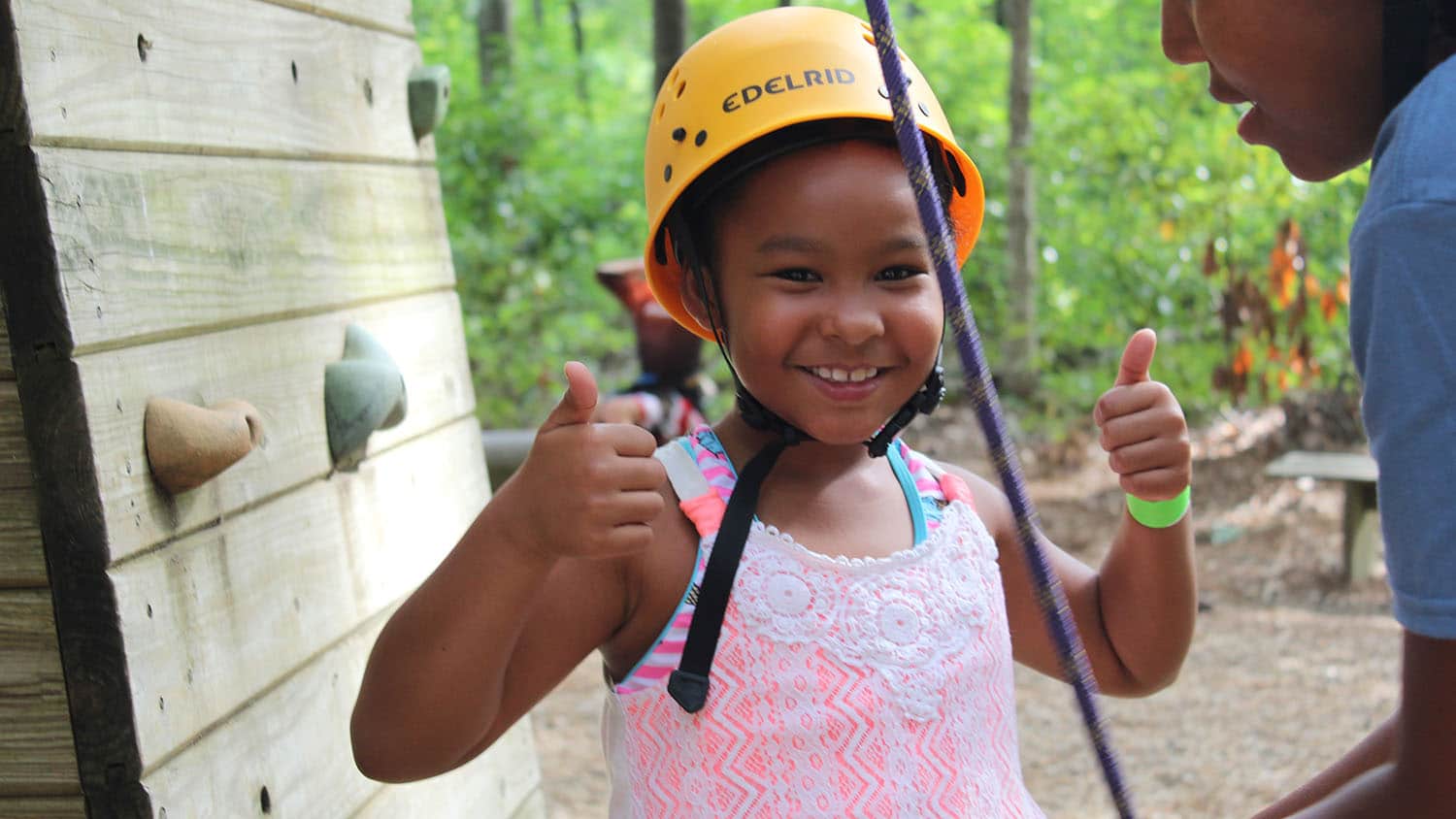
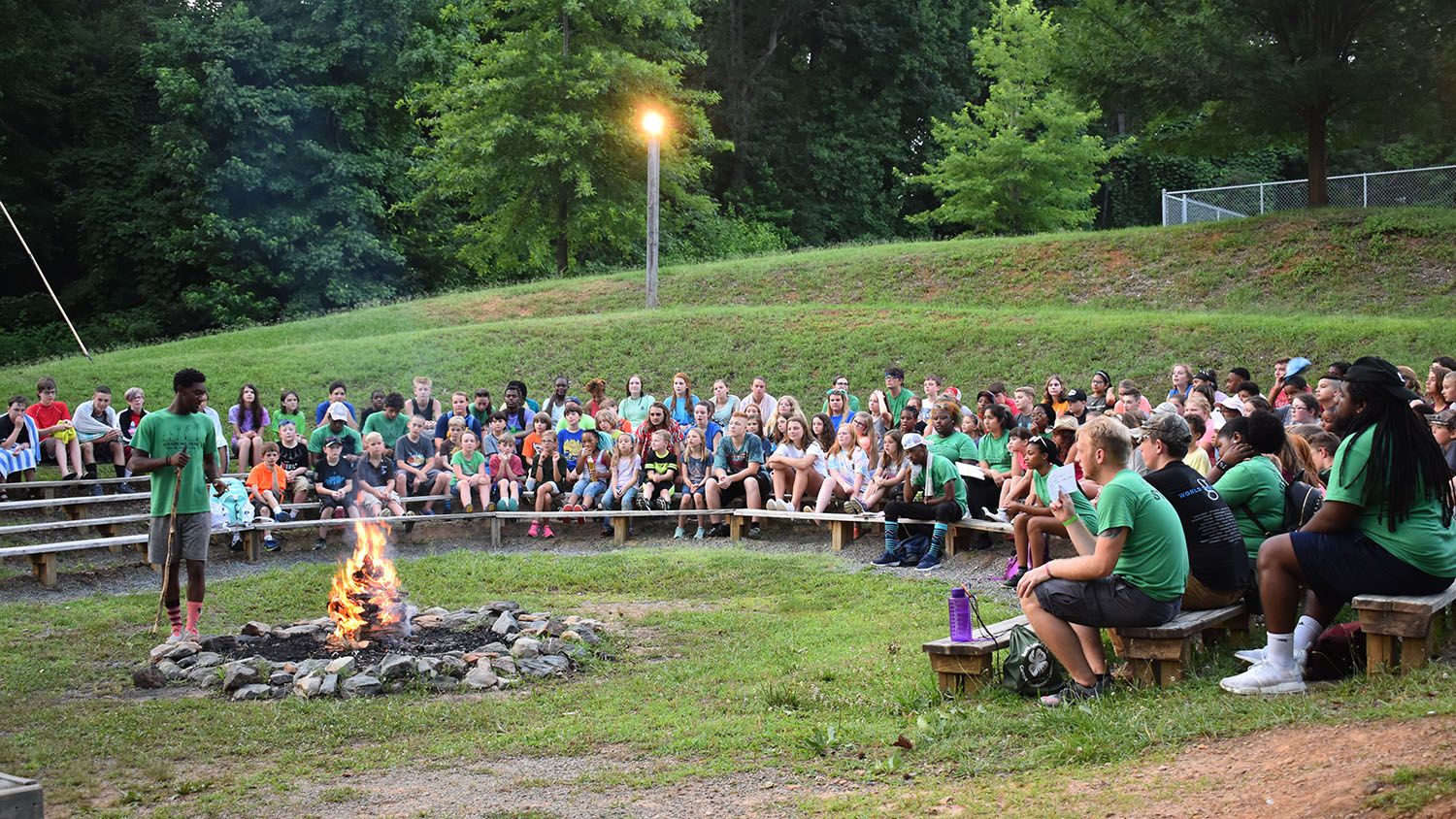
Camp Millstone, Betsy-Jeff Penn and the Eastern 4-H Center don’t just create lifelong learners through summer camps — all three sites connect North Carolina families with year-round programming like field trips, conferences, events and workshops. In 2023, more than 130,000 children got hands-on with their learning and participated in school enrichment programs like Mooving Milk From the Farm to the Fridge and Energy Transformations.
“One of the things that I love about North Carolina 4-H is the diversity of programs — camp is one small piece of that,” says Angela Brisson, extension assistant for our North Carolina 4-H camps. “For a lot of rural communities, 4-H may serve as the only youth program that’s available for a lot of kids for a nominal fee. We are covering the cost of our programs as much as possible and trying to keep our camp fees low so that we’re open and available for all children across 4-H.”
Camp has this magical appeal, or special ability, to bring all different types of people together.
At the heart of 4-H and the camp experience is play. Staff and campers are given the autonomy to discover and explore unique interests. The camp directors often reinforce the importance of cultivating curiosity and having the time to do so.
“Camp has this magical appeal, or special ability, to bring all different types of people together,” says Burns. “We all share the same love for the same thing, which makes us all love each other a little more without even knowing each other, really.”
South America: Sustainability in Practice
Kelli Johnson earned her bachelor’s degree in marketing from North Carolina Central University, but her desire to strengthen her understanding of marketing analytics drew her to the Poole College of Management’s Master of Management, Marketing Analytics (MMA) concentration. The online program offers optional courses that take students outside the U.S., and Johnson jumped at these opportunities to study abroad — first in Germany, and later in Brazil as part of the Sustainable Business in Emerging Markets course.
During her 10-day trip to Brazil, Johnson and her classmates visited B Corporations — companies certified for their high performance on social and environmental metrics — to gain insight into the sustainability challenges businesses in emerging markets must face.
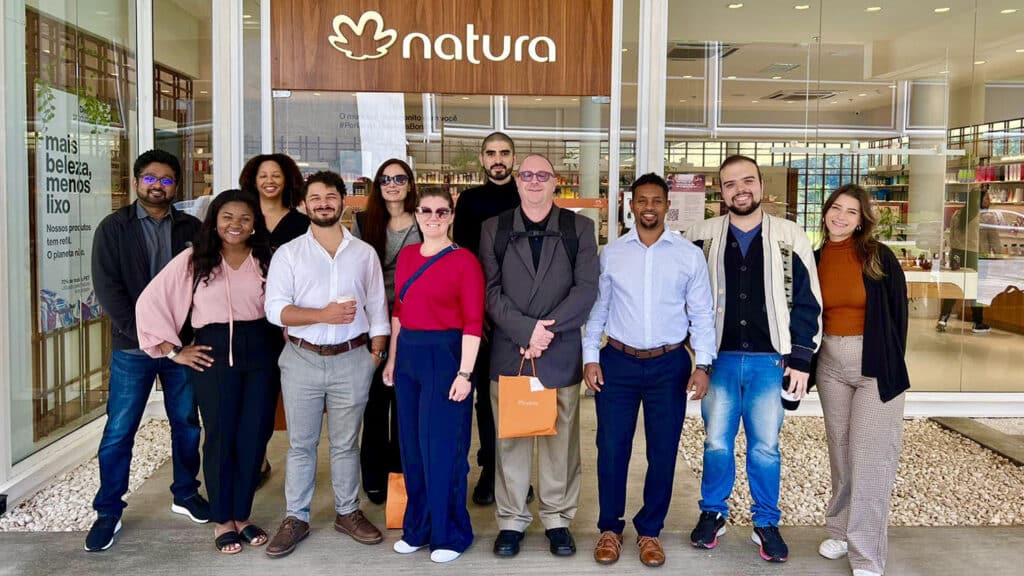
In one of these visits with the B Corporation Litro de Luz Brasil, students learned how the company constructs its signature low-cost, solar-powered lamps, which are deployed to communities throughout Brazil that lack access to affordable lighting. The students even got the chance to build one of these lamps themselves.
Developing a global perspective while you’re a student can be incredibly valuable, no matter what you end up doing.
“I didn’t know what a B Corporation was before this course,” said Johnson. “Not only did I get to learn all about these companies and their focus on sustainability, I also got the chance to give back by contributing to this larger, real-world project.”
Johnson also took full advantage of her time abroad to soak up the culture and natural splendor of Brazil. She and her classmates hiked to breathtaking clifftop vistas, watched a football match between Argentine and Brazilian clubs, sampled Brazilian cuisine, viewed the world-famous Christ the Redeemer statue and visited with residents of marginalized neighborhoods in Rio de Janeiro to learn about their unique social and environmental challenges.

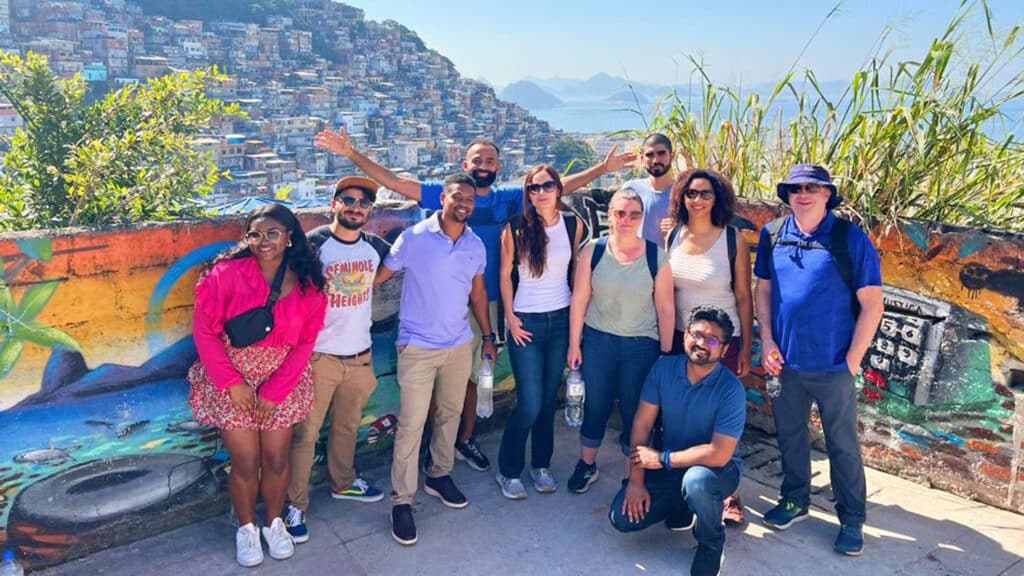

The experience gave Johnson a deeper understanding of the problems that real businesses must navigate to create sustainable solutions for their stakeholders. As she prepares to complete the MMA program this May, she appreciates that the knowledge she’s gained is helping her bring a more analytical mindset to her role as a marketing specialist with Toshiba — and may even someday empower her to launch her own successful business.
“I encourage people to travel and to gain different perspectives, because it opens your eyes to how other people approach their problems,” said Johnson. “Developing a global perspective while you’re a student can be incredibly valuable, no matter what you end up doing.”
This post was originally published in NC State News.
